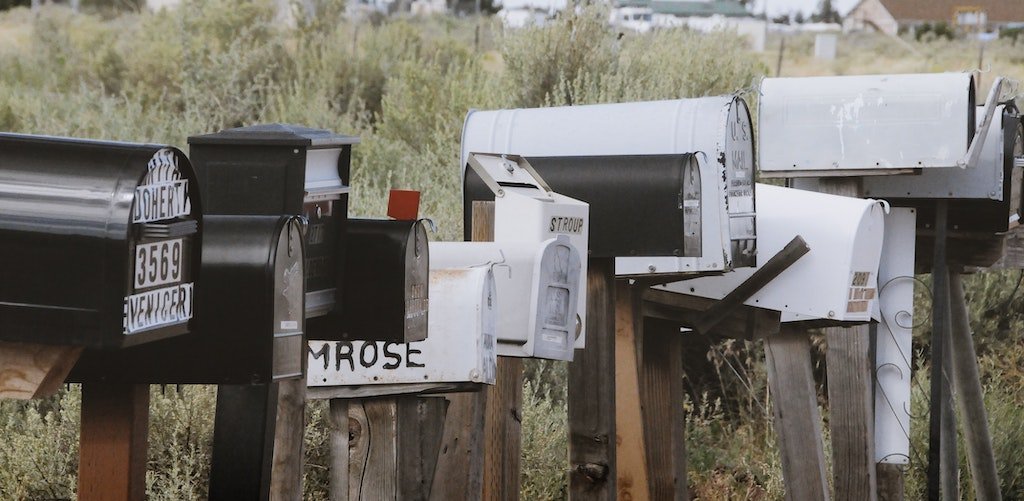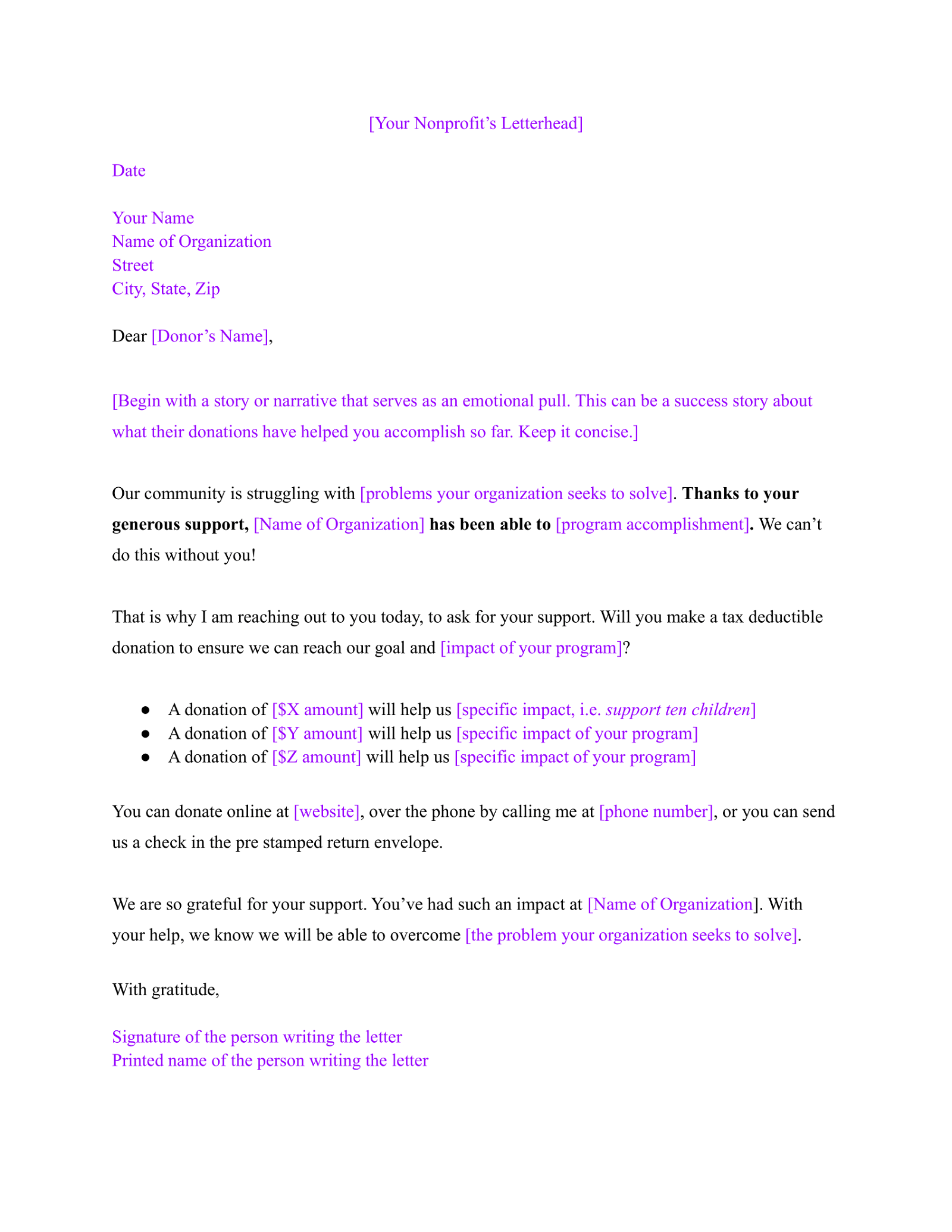
It’s true that online fundraising becomes more popular every year. But no matter what goes on online, one thing that will never go out of style is the fundraising letter. A compelling fundraising letter is one of the most valuable tools in your organization’s toolkit. A fundraising letter is a great way to connect with current and potential donors.
You can incorporate fundraising letters into your fundraising strategy all year long to help you raise support for new programs, get funding for capital campaigns, in-kind donations, sponsorships, and other types of support. These letters are also another opportunity to tell your story and demonstrate your organization's impact.
Check out the tips we have rounded up to help you write excellent fundraising letters!
6 Tips To Writing Great Fundraising Letters
- Keep things personal and donor-centered
- Write what is essential
- Make your ask very clear
- Ditch the stats and tell a story
- When it comes to fundraising letters, looks matter
- Include a way to give online
- Free fundraising letter template
Before You Send Your Fundraising Letter
When all is said and done, sending fundraising letters can be a big undertaking. The printing costs and postage add up, so it’s important that you’re very intentional when planning it out. Here are some things to consider before you write your letters:
- Identify a specific goal amount you'd like to raise from this particular mailing
- Choose your audience. Are you writing to current donors? Is this an acquisition mailing? We recommend creating a list of at least 25 individuals with whom you currently and consistently communicate.
- Make sure you have an updated CRM system or donor-tracking software with the current contact information of those individuals and the ability to record donor and gift information.
- Price out how much each letter will cost "all in" (in other words, how much will it cost you to write and print the letter, put it in an envelope, and address and mail it?)
- Once you know the price per letter, confirm that you have that money budgeted for postage and printing.
- Identify a few staff or volunteers who can help fold, stuff, label, and send the letters once they're ready. This is easy but can be time consuming. (Pro tip: Play some music, get together in one room, and have a stuffing party! That can make it a fun task).
Okay, now that you know who you’re sending to, how much it will cost, and who is going to help make it happen, let’s dive into the writing of the letter itself.
6 Tips To Writing Great Fundraising Letters
1. Make it personal
For many, getting a letter that starts with “Dear Friend” or “Dear Supporter” might be something that quickly makes them want to stop reading. It’s clearly a generic form letter, and that is less likely to be worth someone’s time. That’s why it’s important to make it personal. Address them with their first name (which is why you need to have your updated donor-tracking software).
One strategy that helps many nonprofits keep things personal is to write each fundraising letter as if you're writing to a friend. This enables you to maintain a natural, personal, and direct voice.
2. Write what’s essential
Some of your donors will eagerly read every word you write. Others will skim your letter for the highlights. You can cater to both groups by writing a letter that's easy to scan.
Use highlighted text, indentations, bullets, subheads, and other visual aids to help the "skimmers" gather the highlights of your letter. And, in the body of the letter, include the details and information you believe the "detailed readers" will want to receive.
As far as length, there is no strict rule for how long it should be. We say to write precisely the length you need to clearly communicate to your donors and then stop. Don't stress about page numbers or word count. Write clearly, concisely, and leave out unnecessary information.
3. Make your ask clear
A fundraising letter is not a place to be vague. Be as specific as possible in whatever you’re asking for.
Tell your readers exactly what you're trying to accomplish with the letter. When you can, give numbers. Then, ask your reader to take concrete action to help you achieve that goal.
We recommend repeating your call to action throughout your letter in different variations. That way, the skimmers don't miss the point of the letter.
4. Ditch the stats and tell a story
This isn't the time to get into statistics. It's tempting to add some compelling stats and data to boost your credibility. But statistics don't usually motivate people to give. Stories help your donors connect emotionally to those you're serving, which compels them to give. So, ditch the stats and tell a story.
5. When it comes to fundraising letters, looks matter
Don't skimp on the design, formatting, or printing of your fundraising letter. Your letter should look--and even feel--appealing and easy to read.
Keep the font, colors, and graphics consistent between your fundraising letter, envelopes, reply cards, and anything else you include. That way everything looks organized, professional, and clean.
Don't be afraid of white space in your letter. Only saying what’s essential makes this easier. White space gives readers a place to "rest." A page with too much text looks overwhelming and intimidating. Opt for one-inch margins and single spacing. One great way to break up large text blocks is to add a photo or a compelling quote in a text box.
Fundraising letters are not the time skimp on paper! Print your letter on high-quality paper.
6. Include a way to give online
Remember, the key is to appeal to a broad audience. Offering multiple response options makes it easier for people to respond to your donation request. So, include a response card and envelope for those who prefer to mail their donation and add a phone number and simple instructions for online giving as well. Setting up a customized donation page for your campaign is an excellent touch.
And there you have it! Those tips will help you write an excellent fundraising letter to get you the results you desire. Don’t forget to send a thank you letter and receipt once you receive your donation.
Fundraising letter template
Now that you know how to write the ideal fundraising letter, feel free to use this fundraising letter template as a guide!

Here are three more resources to help boost your fundraising efforts:
